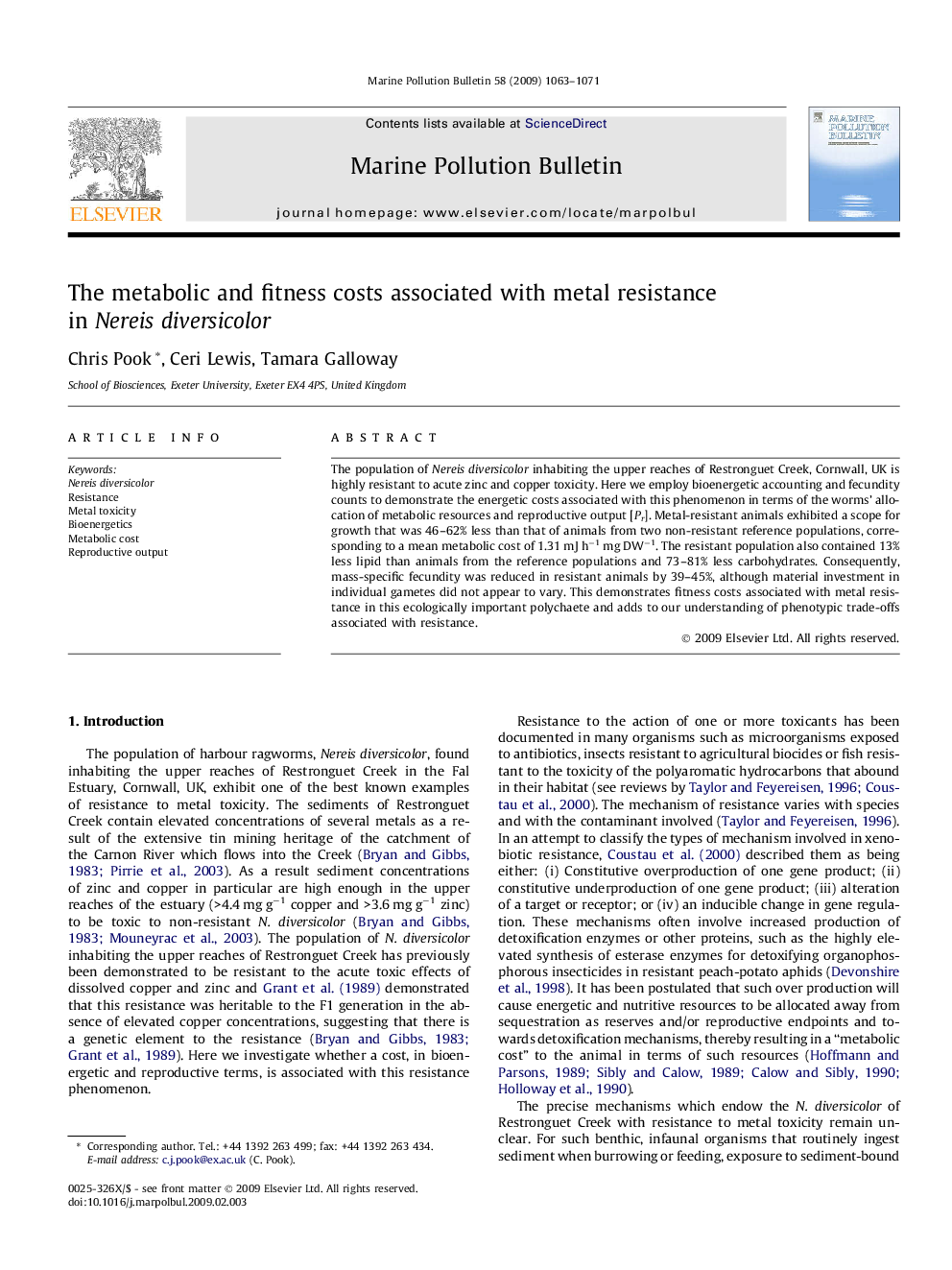| Article ID | Journal | Published Year | Pages | File Type |
|---|---|---|---|---|
| 4476942 | Marine Pollution Bulletin | 2009 | 9 Pages |
The population of Nereis diversicolor inhabiting the upper reaches of Restronguet Creek, Cornwall, UK is highly resistant to acute zinc and copper toxicity. Here we employ bioenergetic accounting and fecundity counts to demonstrate the energetic costs associated with this phenomenon in terms of the worms’ allocation of metabolic resources and reproductive output [Pr]. Metal-resistant animals exhibited a scope for growth that was 46–62% less than that of animals from two non-resistant reference populations, corresponding to a mean metabolic cost of 1.31 mJ h−1 mg DW−1. The resistant population also contained 13% less lipid than animals from the reference populations and 73–81% less carbohydrates. Consequently, mass-specific fecundity was reduced in resistant animals by 39–45%, although material investment in individual gametes did not appear to vary. This demonstrates fitness costs associated with metal resistance in this ecologically important polychaete and adds to our understanding of phenotypic trade-offs associated with resistance.
